June 12th, 2017 · Comments Off on That Regrettable Weekend

That Regrettable Weekend contains 20 of my songs, plus the eponymous instrumental. You can find it on Bandcamp.
I play soprano, banjo, and baritone ukuleles; keyboards; Tremoloa; Ukelin; bulbul; xylophone; melodica; bells; psaltery; ocarina; grunt call; trombone; and assorted percussion. And sing, of course. Carol Benner plays viola on three songs.
The tracks are:
Little Flower
Bandwagon
Love Me Unconditionally
Little Two-Headed Kitten
Make a Wish
Buenas Noches, Little Roaches
Notary Publics
Careers
Sentimental Doofus
The Hypnotist’s Birthday
Worthless Little Moments
The Renaissance Faire
Whine
Flake Food
My Face Is in the Sand
If Something Goes Wrong
Film Crew
Agnosticize
I Just Don’t Understand
My Pal Satan
That Regrettable Weekend
(Posted by Doug Skinner)
Tags: Music
May 29th, 2017 · Comments Off on Illustrated Songbooks (2)
The Baby’s Opera, an 1877 offering from Walter Crane, includes both decorated sheet music and full-page illustrations, all at 7 and a half inches square. This is what songbooks should look like!
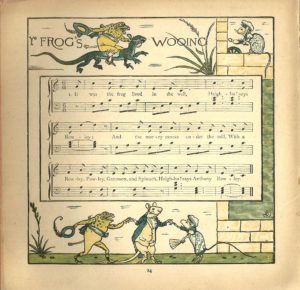
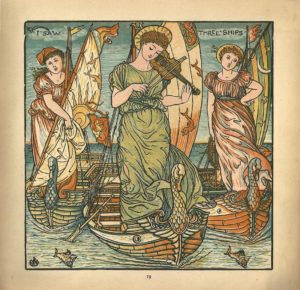
(Posted by Doug Skinner)
Tags: Books
May 22nd, 2017 · Comments Off on The Cocktail Hour
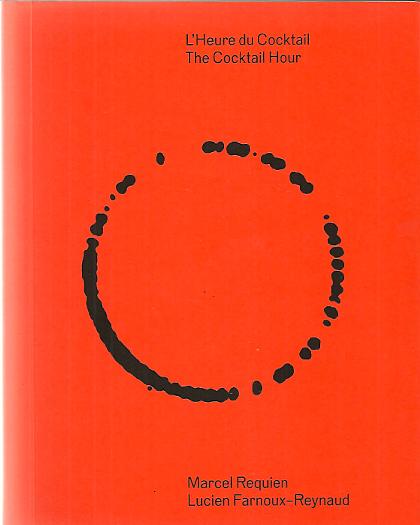
The Cocktail Hour is now available! This classic cocktail guide from 1927 contains 224 recipes collected by Marcel Requien, and a running commentary on the proper drink (and etiquette) for every hour of the day by Lucien Farnoux-Reynaud. The bilingual edition from Corps Reviver includes the original French text, an English translation by Doug Skinner and Gaylor Olivier, and 34 new illustrations by Tony Brook. It’s 256 pages! You can order it here!
(Posted by Doug Skinner)
Tags: Literature
May 14th, 2017 · Comments Off on Illustrated Songbooks (1)
The illustrated songbook is an appealing hybrid, now seldom seen, as fewer homes have a piano to stack them on, and fewer people read music. Many of these songbooks were meant for children, although there are plenty of examples for adults.
Here’s one for the nursery: The Most Popular Mother Goose Songs, published by Hinds, Hayden, & Eldredge, New York, 1915. The illustrations are by the busy children’s illustrator Mabel Betsy Hill, not to be confused with the new Zealand painter Mabel Hill (judging by a Googling, some do). Each of its 44 thick pages contains a song with piano accompaniment, printed in blue, set inside a delicately colored illustration. “Kitty White” and “Higgilty Piggilty” are typical examples. (You can, of course, click on them to enlarge them.)
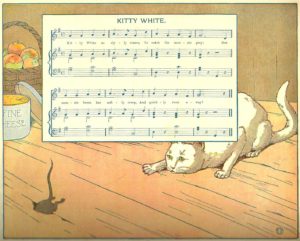
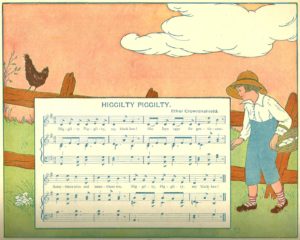
(Posted by Doug Skinner)
Tags: Music
April 30th, 2017 · Comments Off on Memorable Magazines (8): A Wake Newslitter
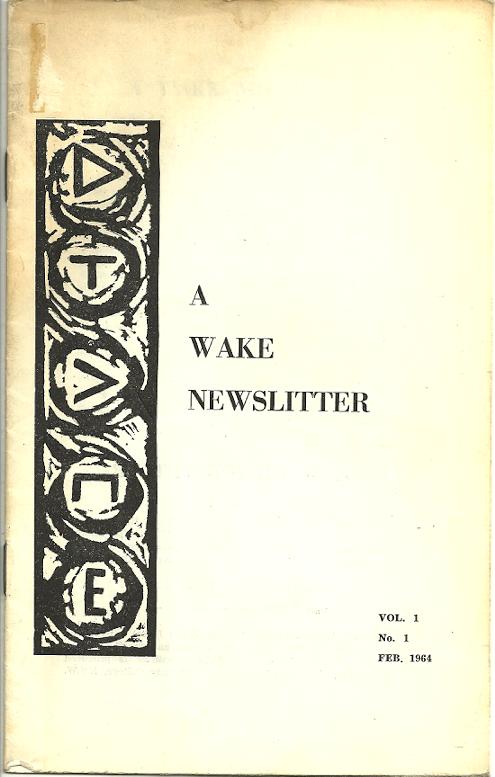
I like the idea of a magazine devoted to only one book, particularly one that has now become so unpopular. A Wake Newslitter was devoted entirely to Finnegans Wake.
Back in 1964, Joyce buffs across the globe sent in their discoveries to Fritz Senn (in Unterengstringen, Switzerland) and Clive Hart (in Newcastle, Australia). Senn and Hart assembled them into a 16 page bimonthly. There were 18 issues published in 1962 and 1963; a new series began in February, 1964, formally dubbed Volume 1, Volume 1. I don’t know how long it ran; the last issue in my collection is from 1980.
That first (but nineteenth) issue contains: a list of languages, from one of Joyce’s notebooks; a piece on the use of Albanian; a list of Swahili words; an article on the gematria of ALP and HCE; references to the Hebrew alphabet; brief notes on “Tumulty,” “hadding,” and “W.K.O.O”; and notes on the Tetragrammaton and the opening words of the four Gospels. There’s also an intriguing query (from Nathan Halper): “Ellmann (p. 662) quotes Samuel Beckett as saying that once, when he was taking dictation, there was a knock on the door. Joyce said ‘Come in’ and Beckett, hearing these words, put them into the text. When he read this back, Joyce was surprised by the words but, after a moment’s thought, he let them stay in the text. Where is this ‘Come in’?”
The thrill of discovery! The exasperation with Joyce! The impatience with other Joyceans!
In 1971, the Newslitter published a ten-year index, listing the references to each page. Here’s a sample.
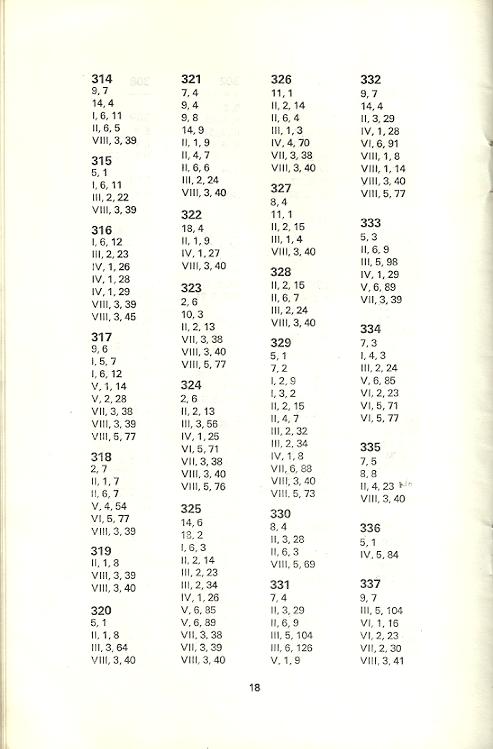
(Posted by Doug Skinner)
Tags: Literature
April 16th, 2017 · Comments Off on Children’s Card Games (230)
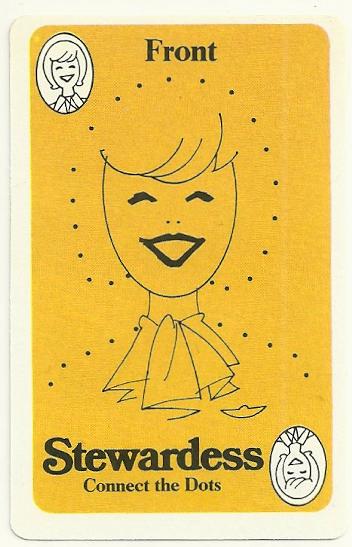
The “Fun in Flight Deck” was published by United Airlines, probably in the ’70s. It contains 24 cards containing games to keep children occupied on those long flights. One side of the cards has connect-the-dot pictures, which can also be used to play Rummy or Solitaire; the other side offers a variety of mazes, puzzles, and things to draw. I hope the kids appreciated it.

(Posted by Doug Skinner)
Tags: Card Games
April 1st, 2017 · Comments Off on I Am Sarcey
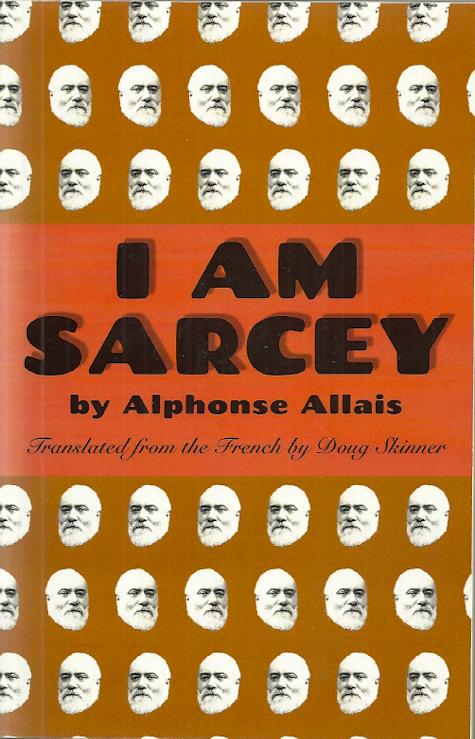
I Am Sarcey is now available from Black Scat Books!
Francisque Sarcey was Paris’s most celebrated critic in the 1890s, and one of its most conservative. He famously panned Alfred Jarry’s Ubu Roi as “a filthy fraud that deserves nothing but the silence of contempt,” and praised light, commercial fare. Not surprisingly, he became an object of derision for young poets and artists. Nobody took the ridicule further than Alphonse Allais, who appropriated Sarcey’s byline for a series of articles in the Bohemian paper Le Chat Noir. Allais’s Sarcey was an obese buffoon who boasted about his appetite, complained about his constipation and impotence, and championed mediocrity in the arts: a memorable comic character who often overshadowed the original.
Doug Skinner has selected, translated, and annotated this famous journalistic prank. It’s now available from Black Scat Books or Amazon.
(Posted by Doug Skinner)
Tags: Alphonse Allais · Books
March 28th, 2017 · Comments Off on Children’s Card Games (229)

The “Game of Wars” offered players a great deal of information about famous wars, on plain and sturdy cards. My copy came in an equally no-nonsense box, which asserted that the game was “instructive and entertaining,” but no instructions. Nor is there any indication of date or publisher. My guess is that it was played like “Authors,” by collecting four of a kind.
(Posted by Doug Skinner)
Tags: Card Games
February 22nd, 2017 · Comments Off on Francis G. Attwood: A Forgotten Cartoonist
From about 1887 to 1899, Francis Gilbert Attwood contributed a monthly page to the magazine Life. (This is, of course, the old humor magazine, not the later one.) He seems to be forgotten now, probably because he died so young, at 44 (1856-1900). According to the brief introduction to Attwood’s Pictures, published by the Life Publishing Company in 1900, he was born and died in Jamaica Plain, Mass, was in the 1878 class at Harvard, and had his work first published in the Harvard Lampoon. He contributed to other magazines, and illustrated a few books, but was mostly known for his work in Life.
Here’s a fine page from January 1888. Please click on it to see it better.

(Posted by Doug Skinner)
Tags: Cartoons
January 8th, 2017 · 1 Comment
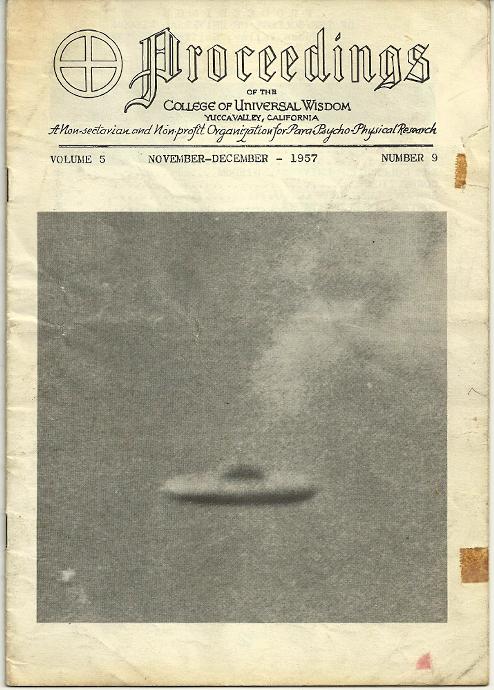
The Proceedings of the College of Universal Wisdom was edited and published by George Van Tassel, one of the livelier contactees of the 1950s. He and his wife Eva settled in Yucca Valley, near a large boulder called Giant Rock; there they held meetings for the Ministry of Universal Wisdom (originally the Brotherhood of Cosmic Christ), hosted UFO conventions, and ran a cafe. They also built the Integratron, a large white domed building intended as a rejuvenation chamber and time travel portal. Van Tassel claimed to be in communication with “space people,” who passed along prophecies and scientific information.
The Proceedings was the “official outlet” for his activities. This issue, from 1957, is 16 pages long; it contains a couple of UFO photos, a statement about the College’s purpose (among other things, to research “the memory span of atoms, the polarity interchange of vortices, and the generation of a ‘time field'”), season’s greetings, an article on the National Investigation Committee for Aerial Phenomena and its attitude toward contactees, an editorial urging less foreign aid and more money for science, an article on fallout, and praise of Van Tassel from one of his followers. The Proceedings, if I’m not mistaken, continued until Van Tassel’s death in 1978.
(Posted by Doug Skinner)
Tags: Ephemera














